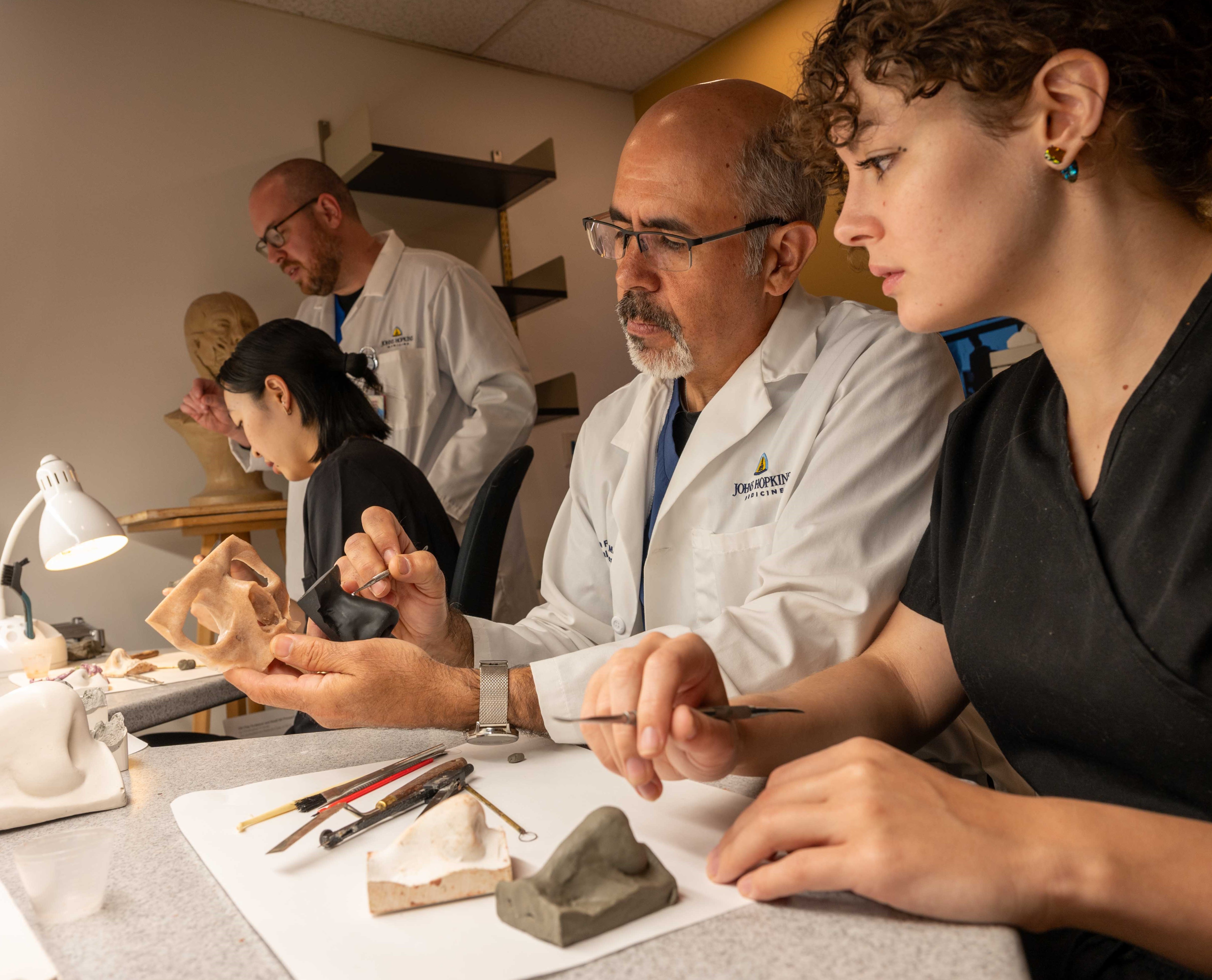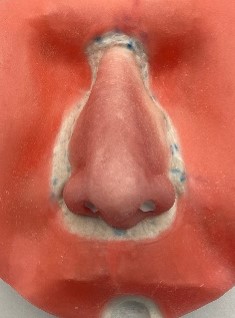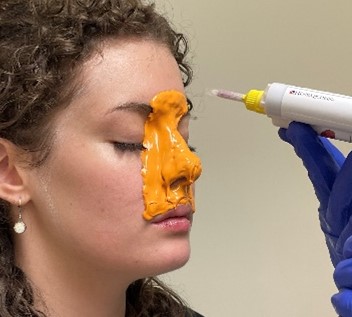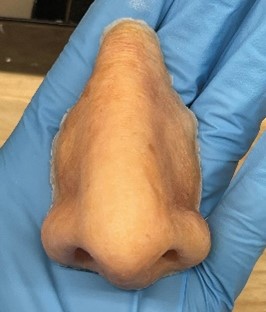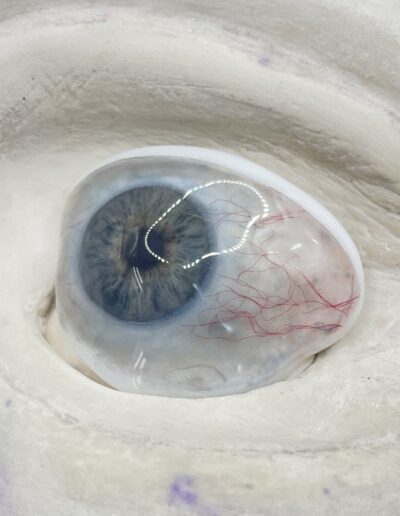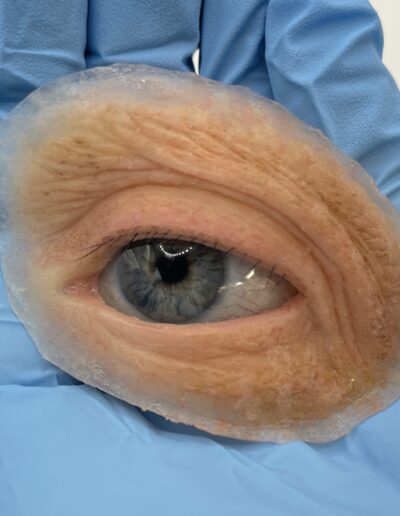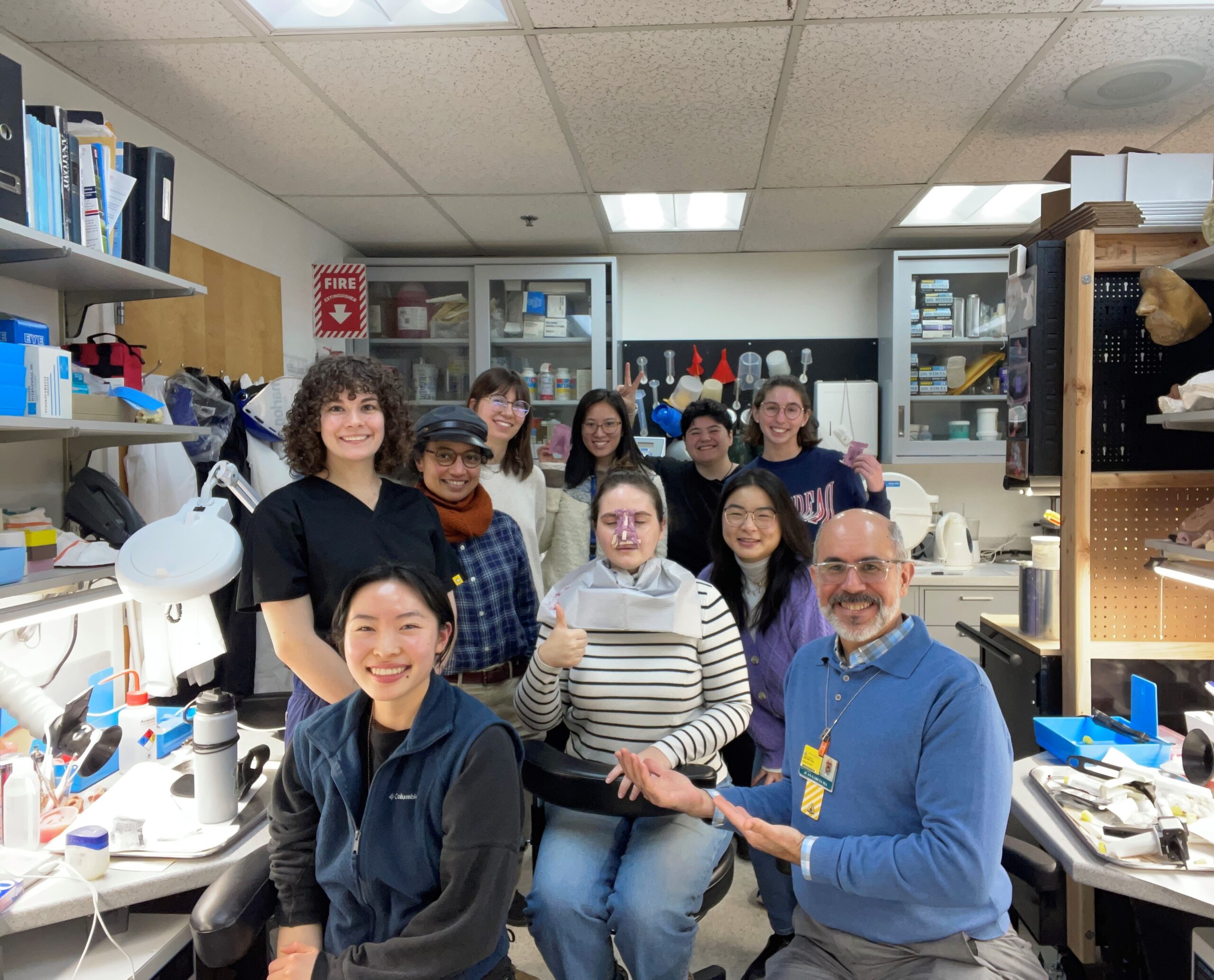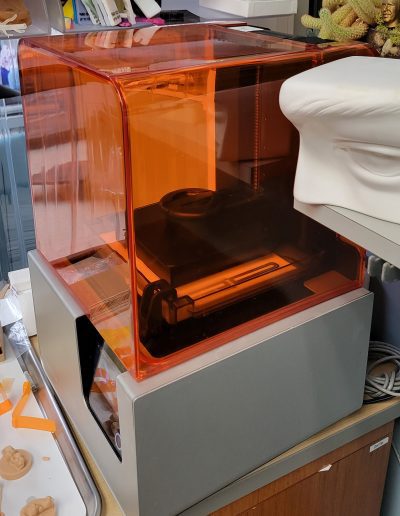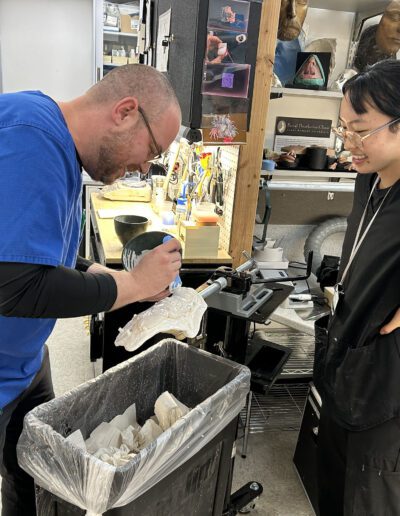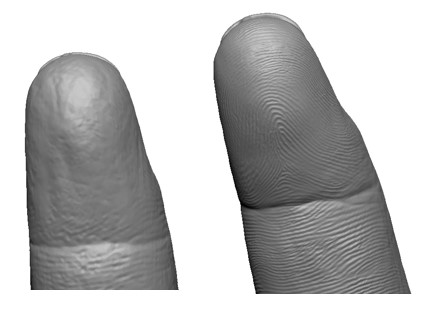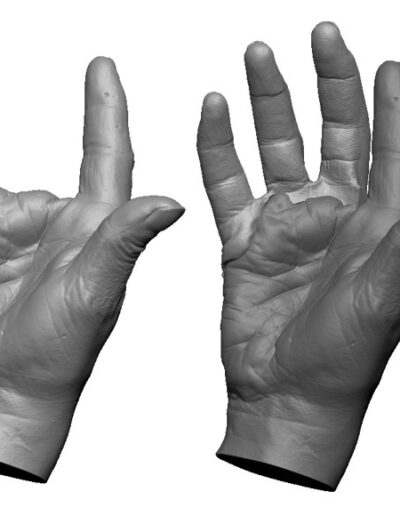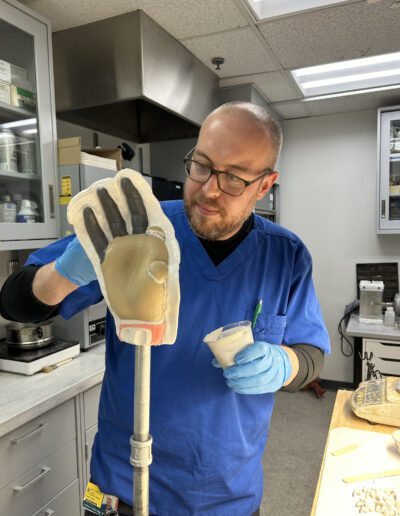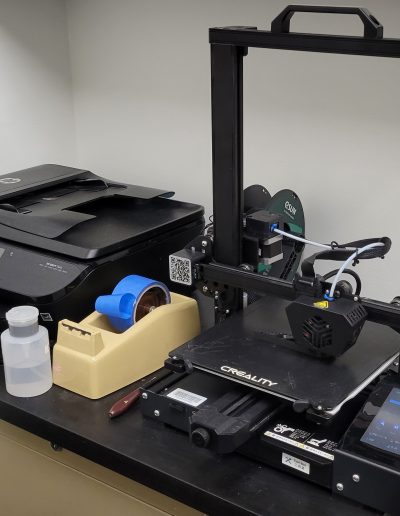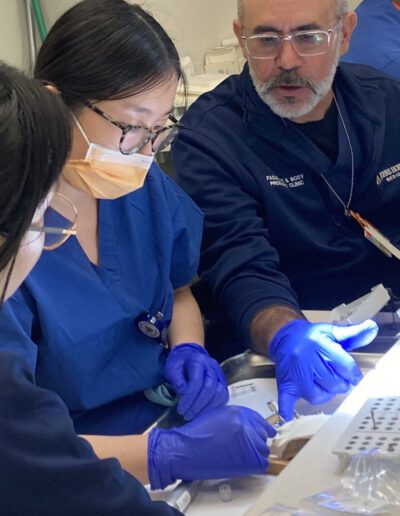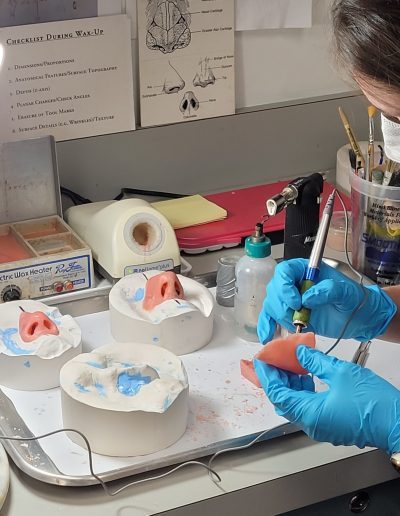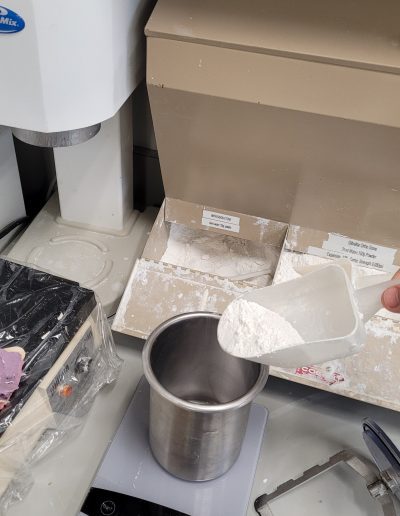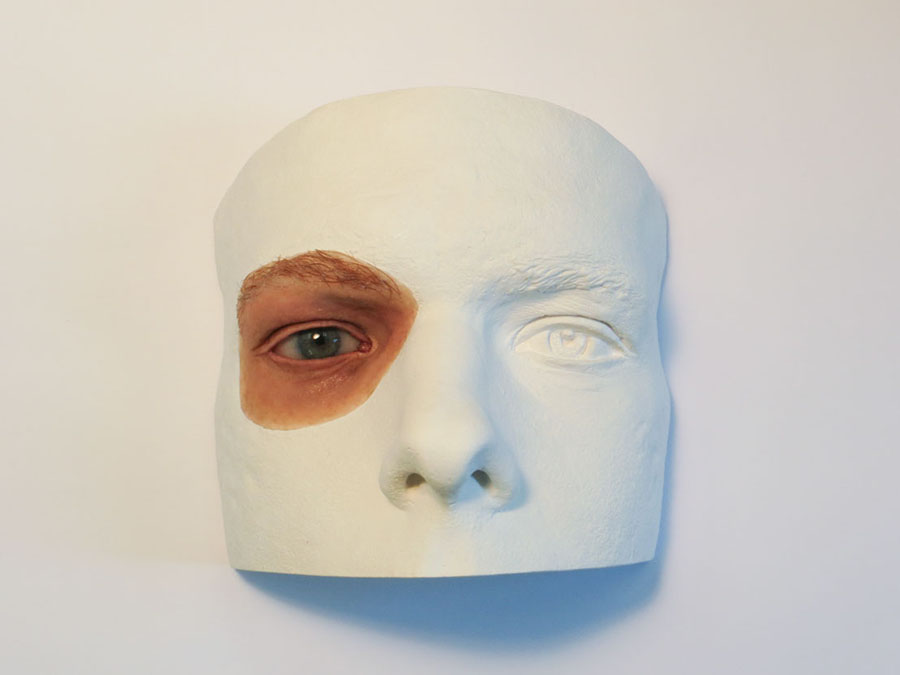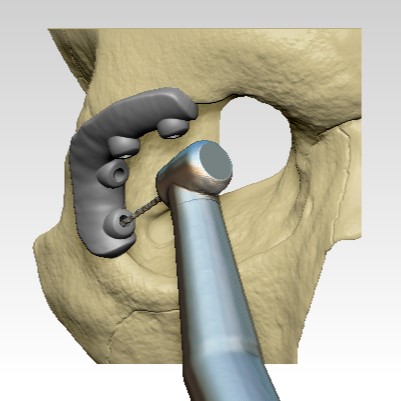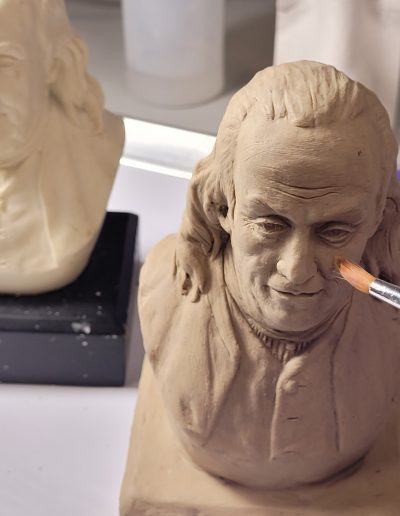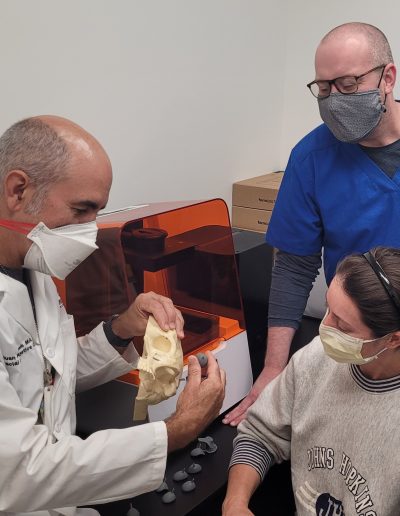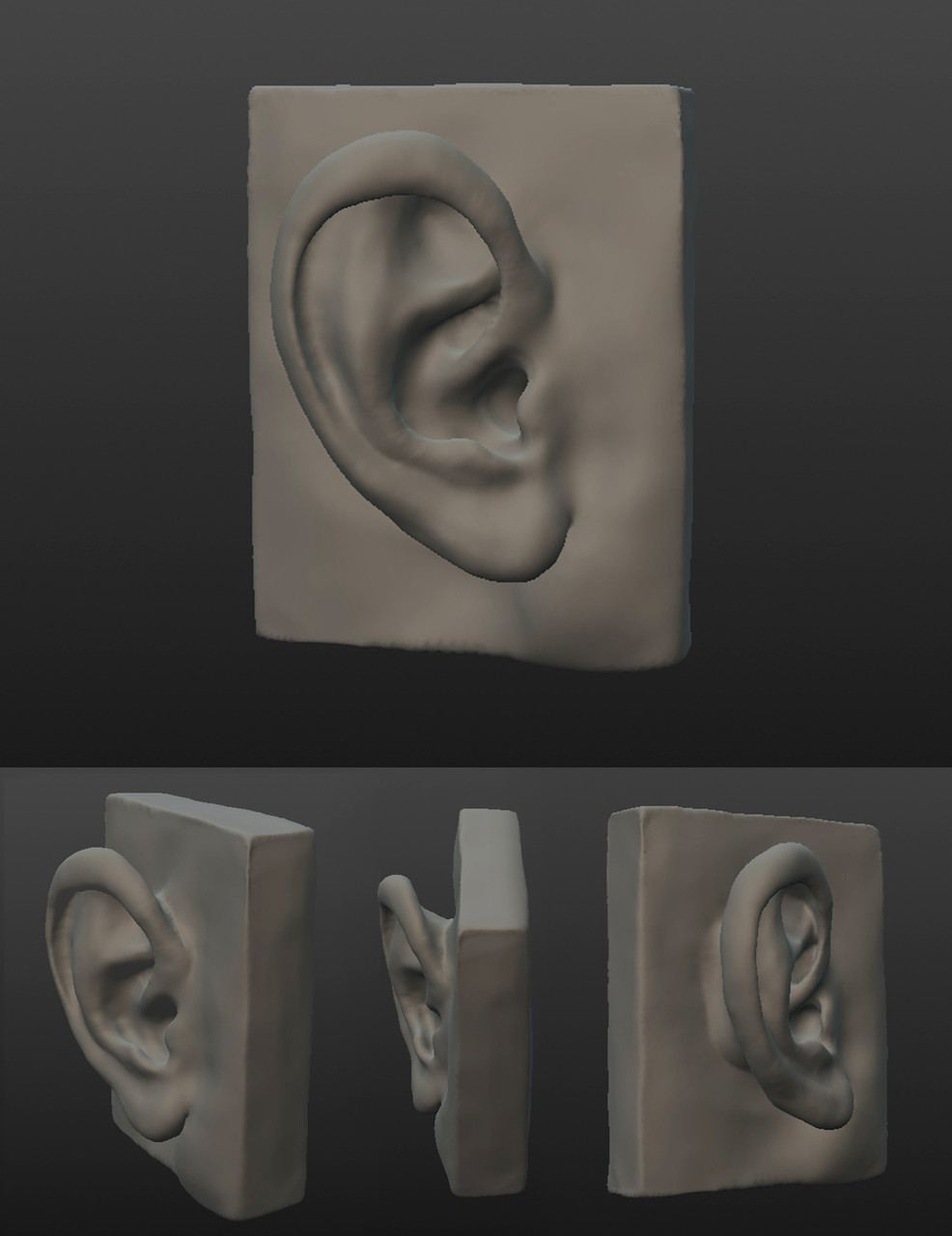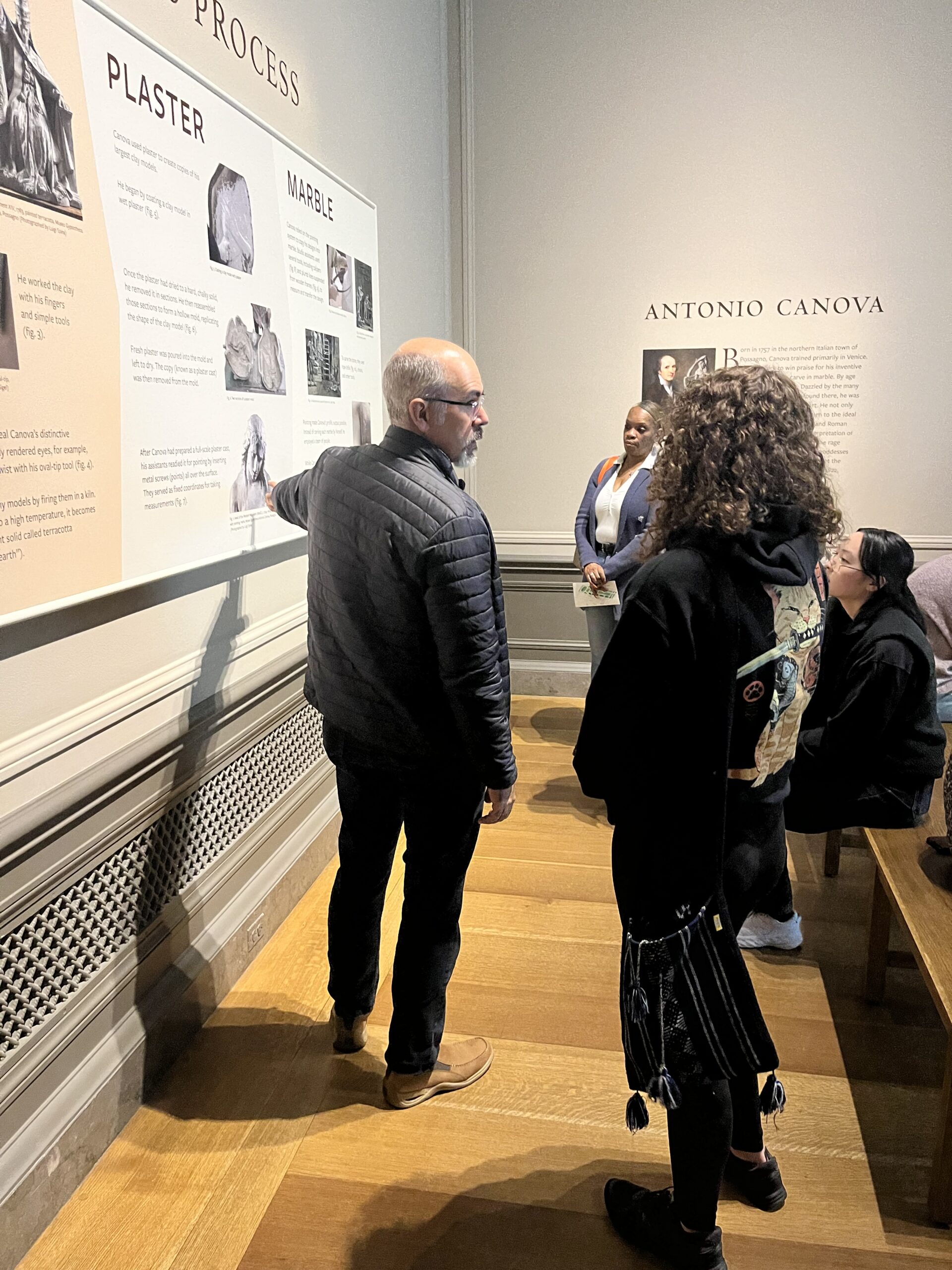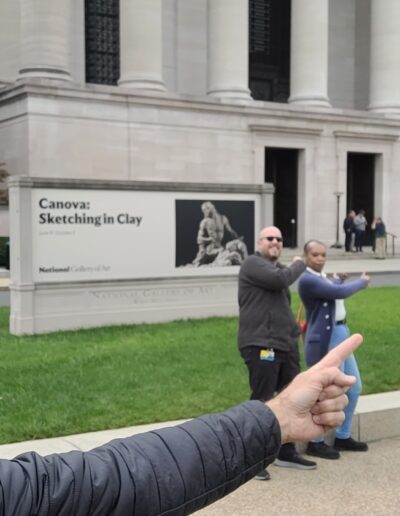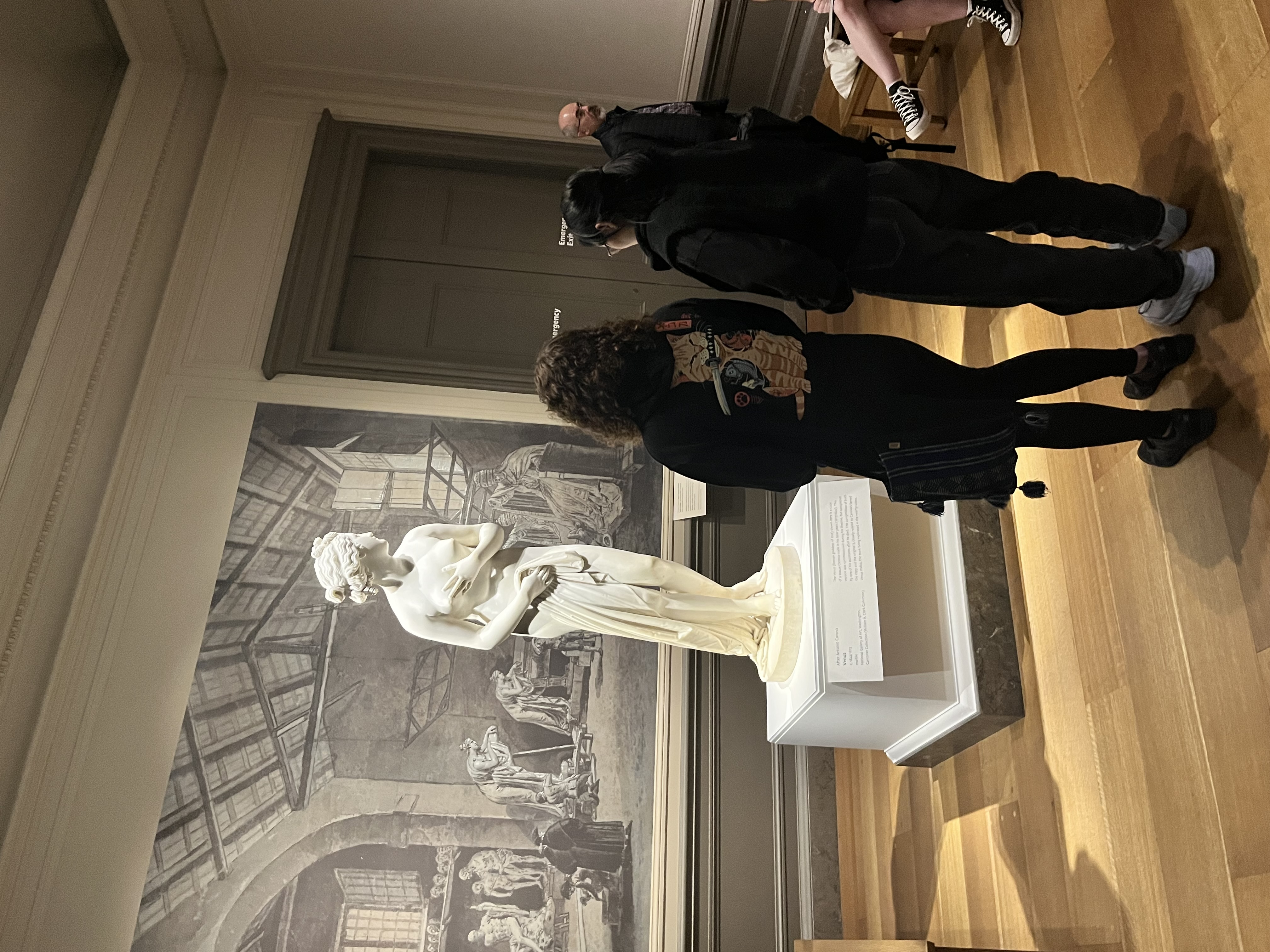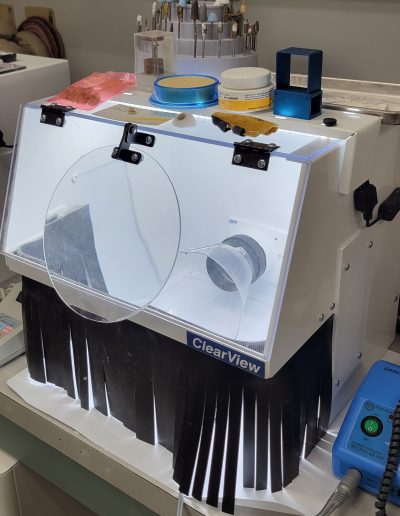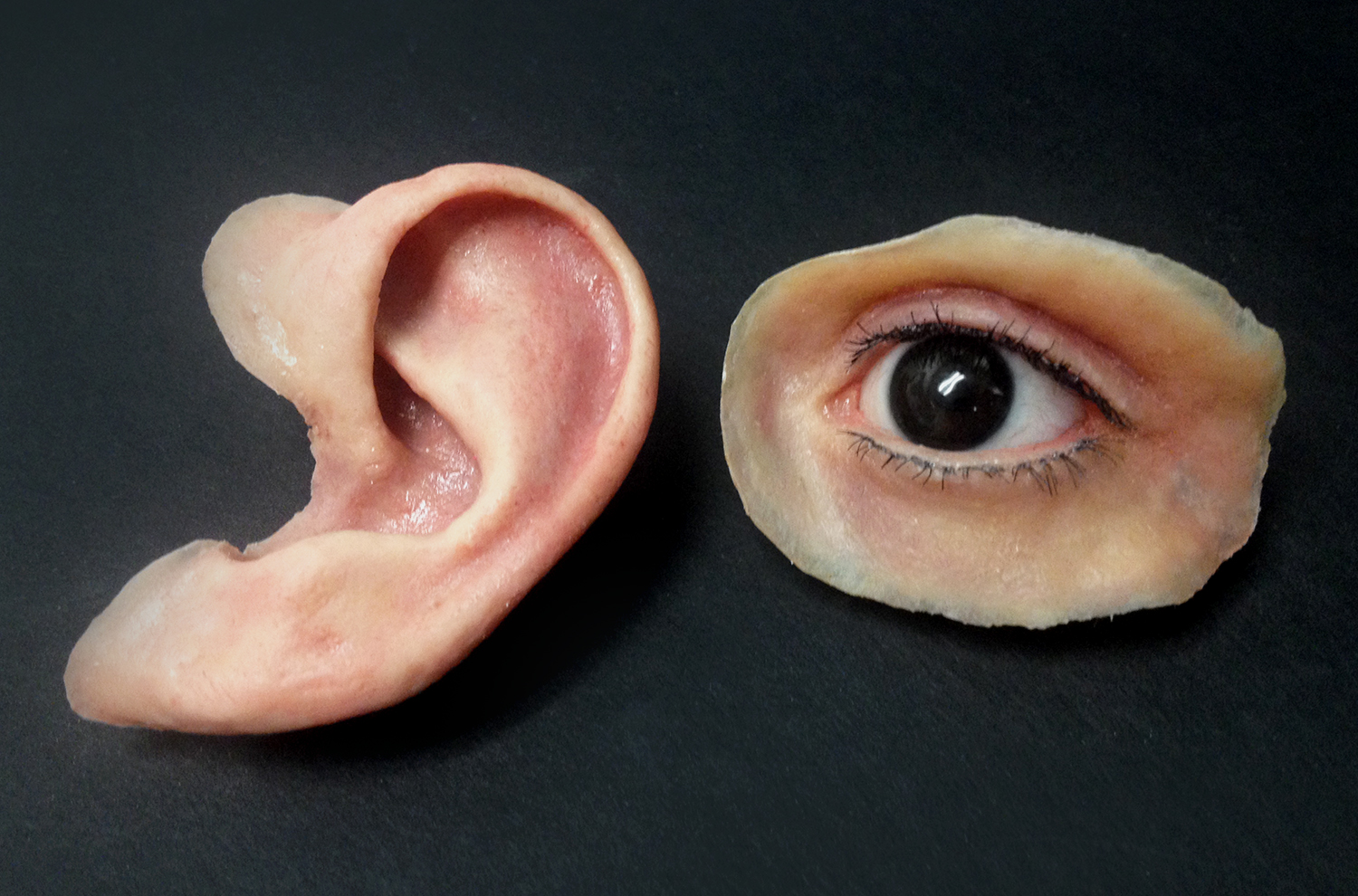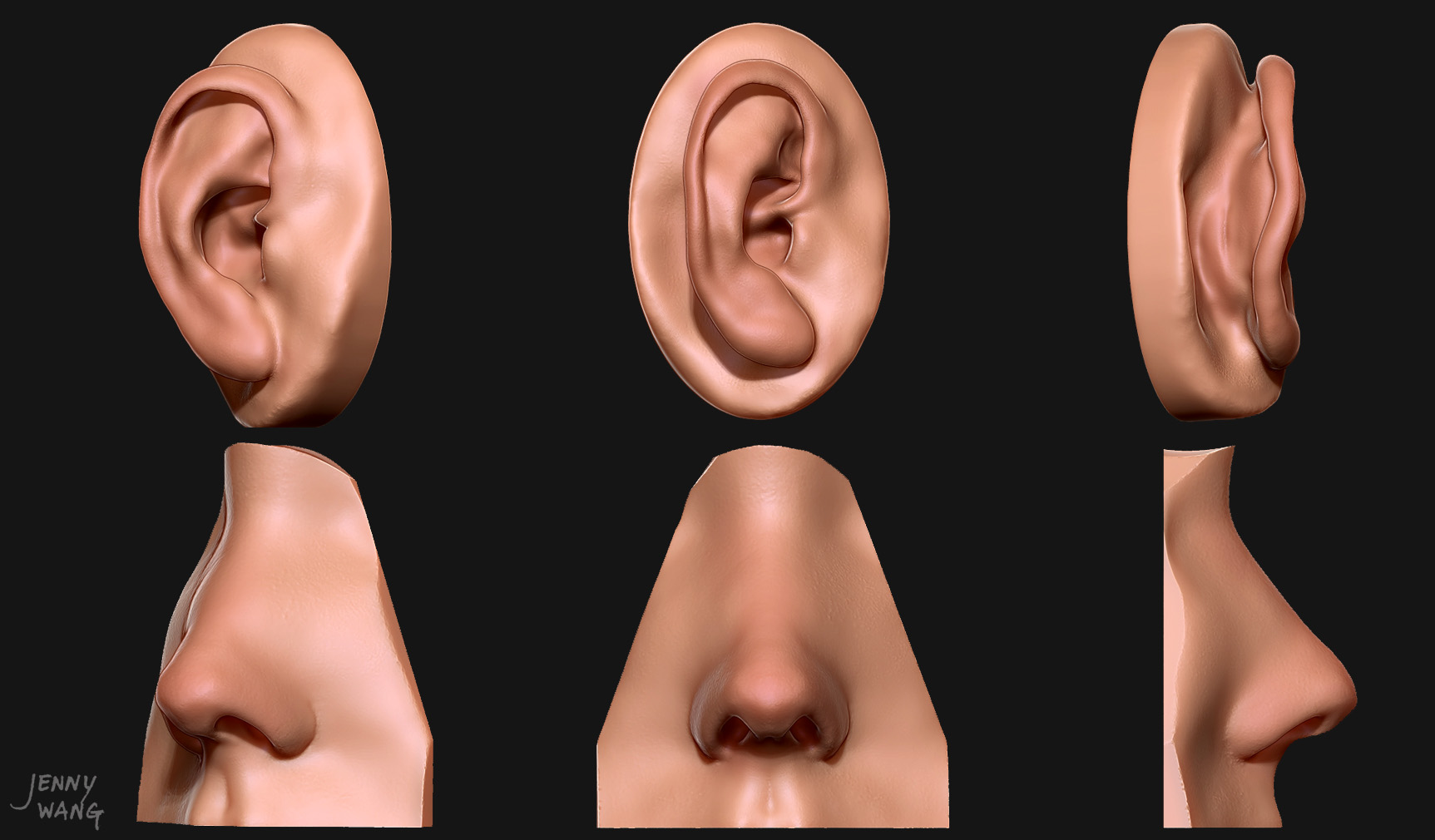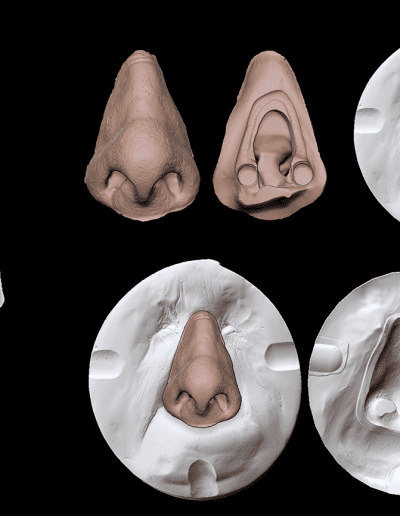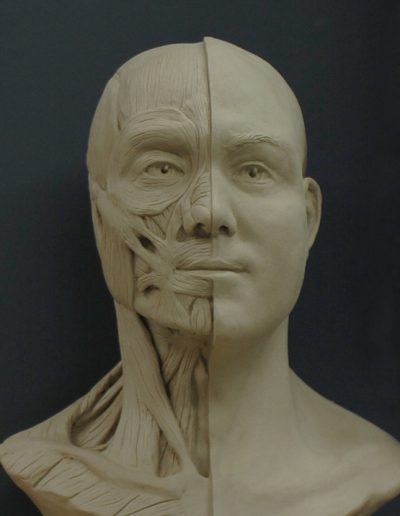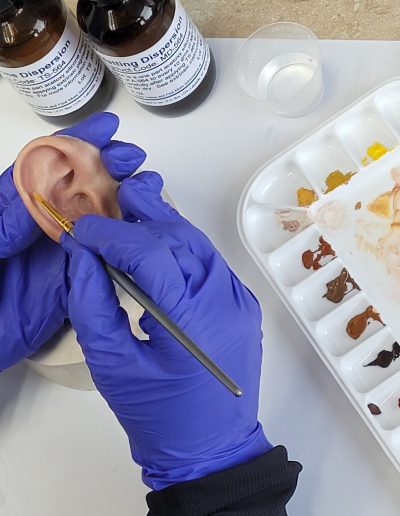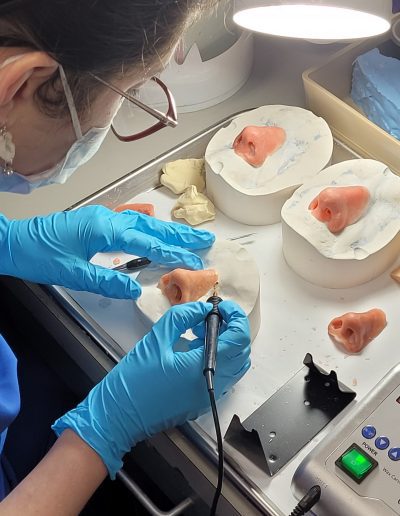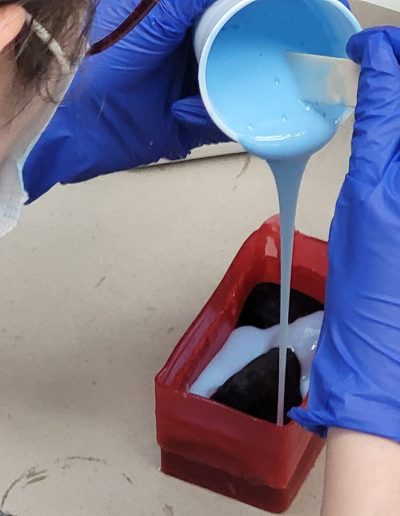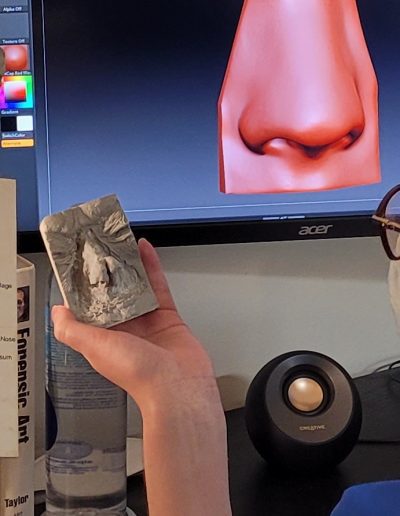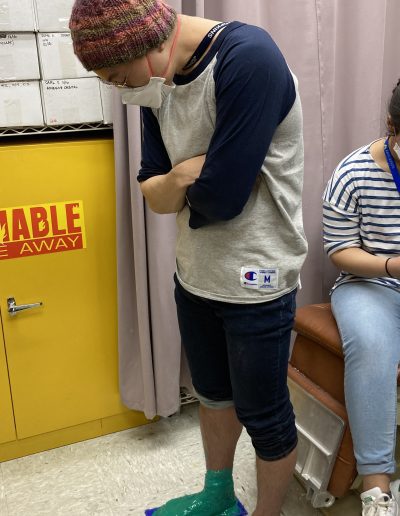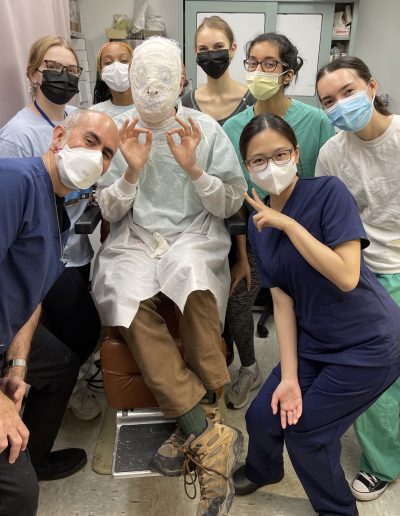Clinical Anaplastology Graduate Program
The Clinical Anaplastology (CA) program is the first of its kind and offers a robust curriculum designed to prepare future leaders in the clinical anaplastology profession. Accredited since 2022, the CA program offers courses in maxillofacial, ocular and somatic prosthetics as well as graduate level science in the School of Medicine.
Innovative Curriculum
Our curriculum is designed to develop clinical and technical skills necessary to provide safe and effective clinical care.
Expert Faculty
Learn from professionals who are subject matter experts in the field of clinical anaplastology.
State-of-the-Art Facilities
Access cutting-edge technology, a world-renowned institution and resources that are unmatched.
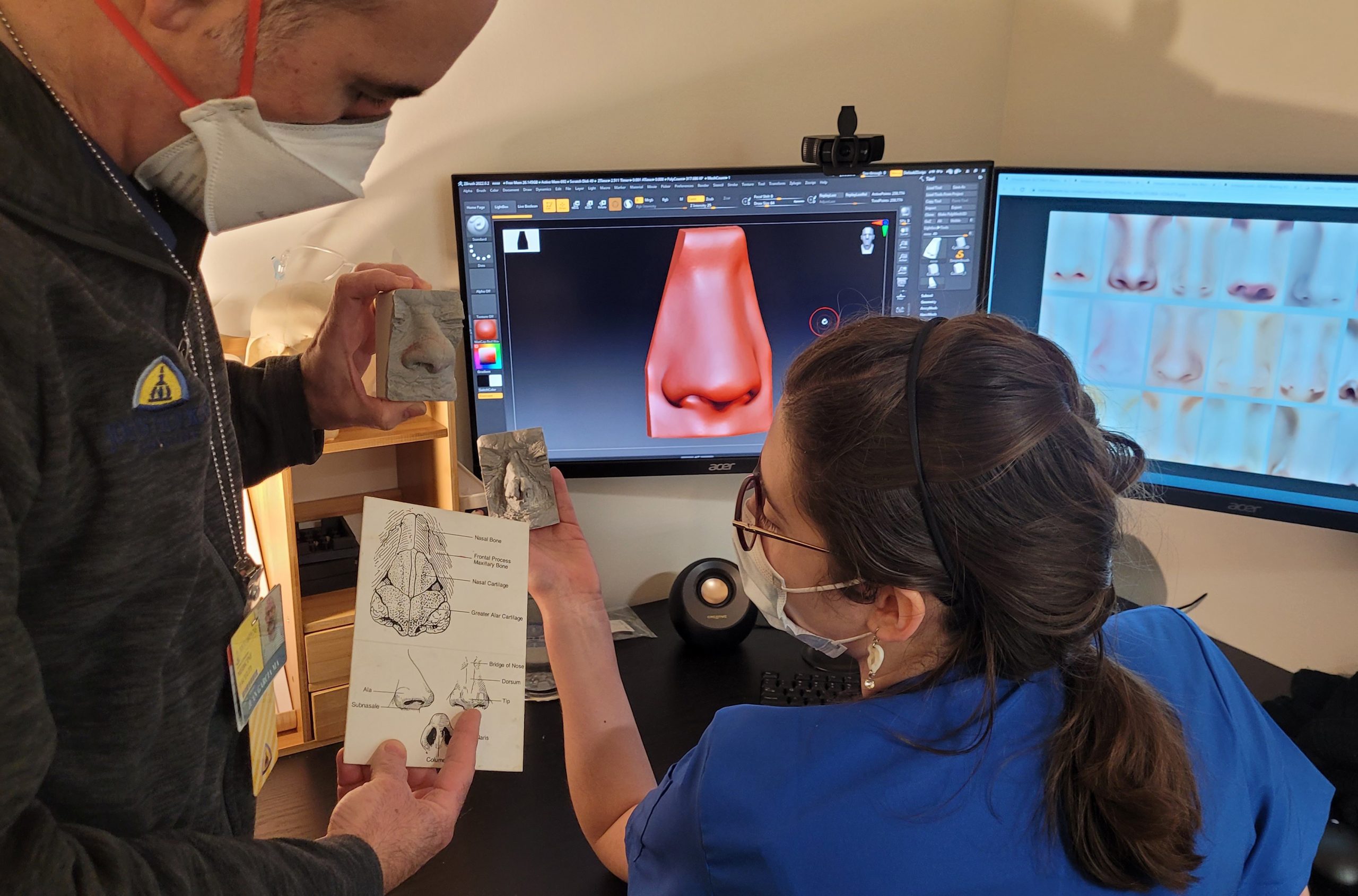
Program Overview
The Master of Science program in Clinical Anaplastology (CA) provides students with knowledge to succeed as clinicians providing facial, ocular (eye), and non-weight bearing somatic (body) prostheses, as well as designing 3D patient-matched models, surgical templates and other 3D printed clinical models. Prostheses are created working with each patient to custom mold, cast, sculpt, and colorize the final wearable device.
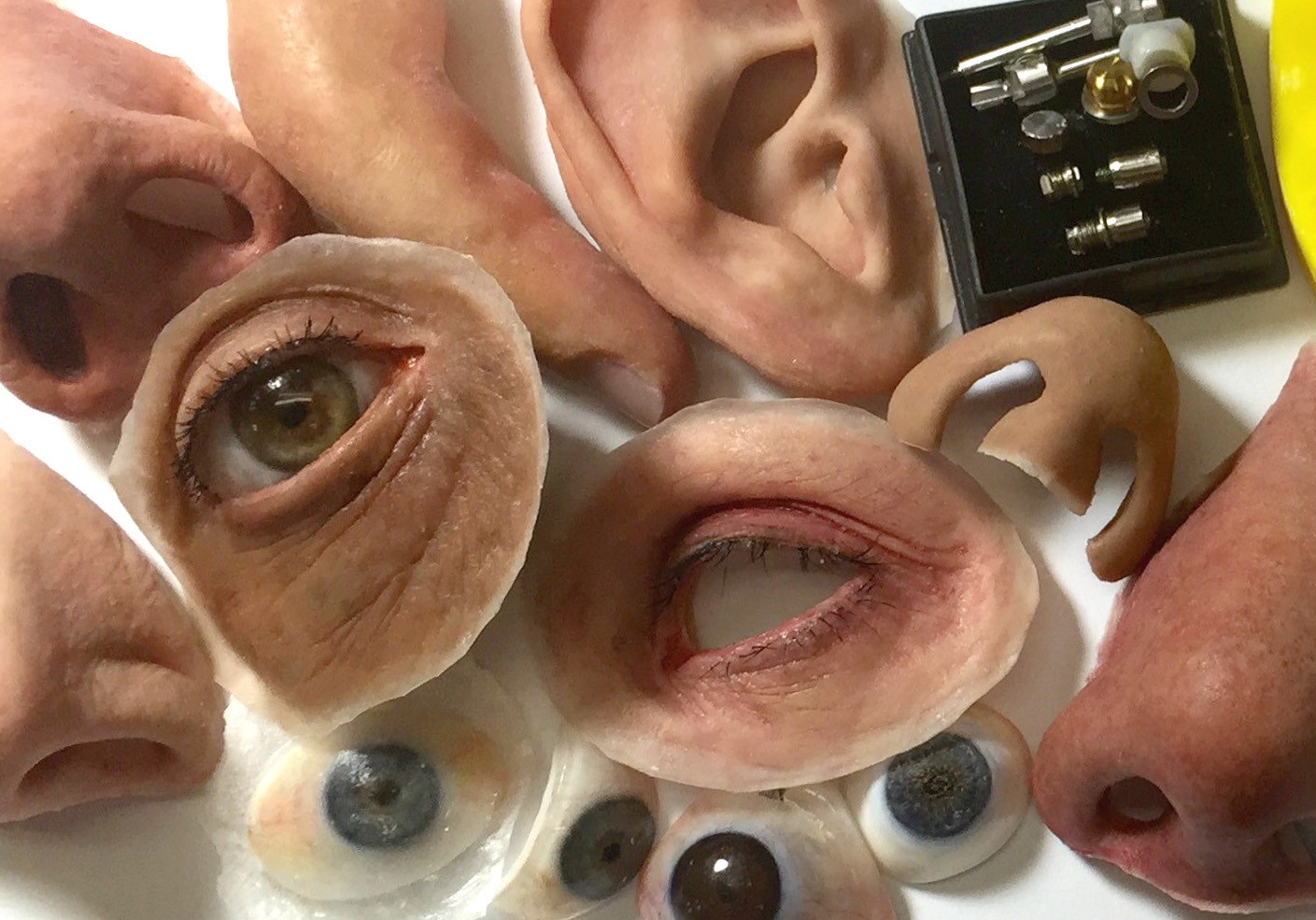
The Profession
Clinical Anaplastology: Design and fabrication of realistic and functional facial, ocular, and somatic (body) prostheses
Clinical anaplastology offers a treatment option to patients for whom surgical reconstruction alone cannot restore facial features or the appearance of limbs and digits. Custom prosthetic devices allow patients to resume functional activities of daily living.
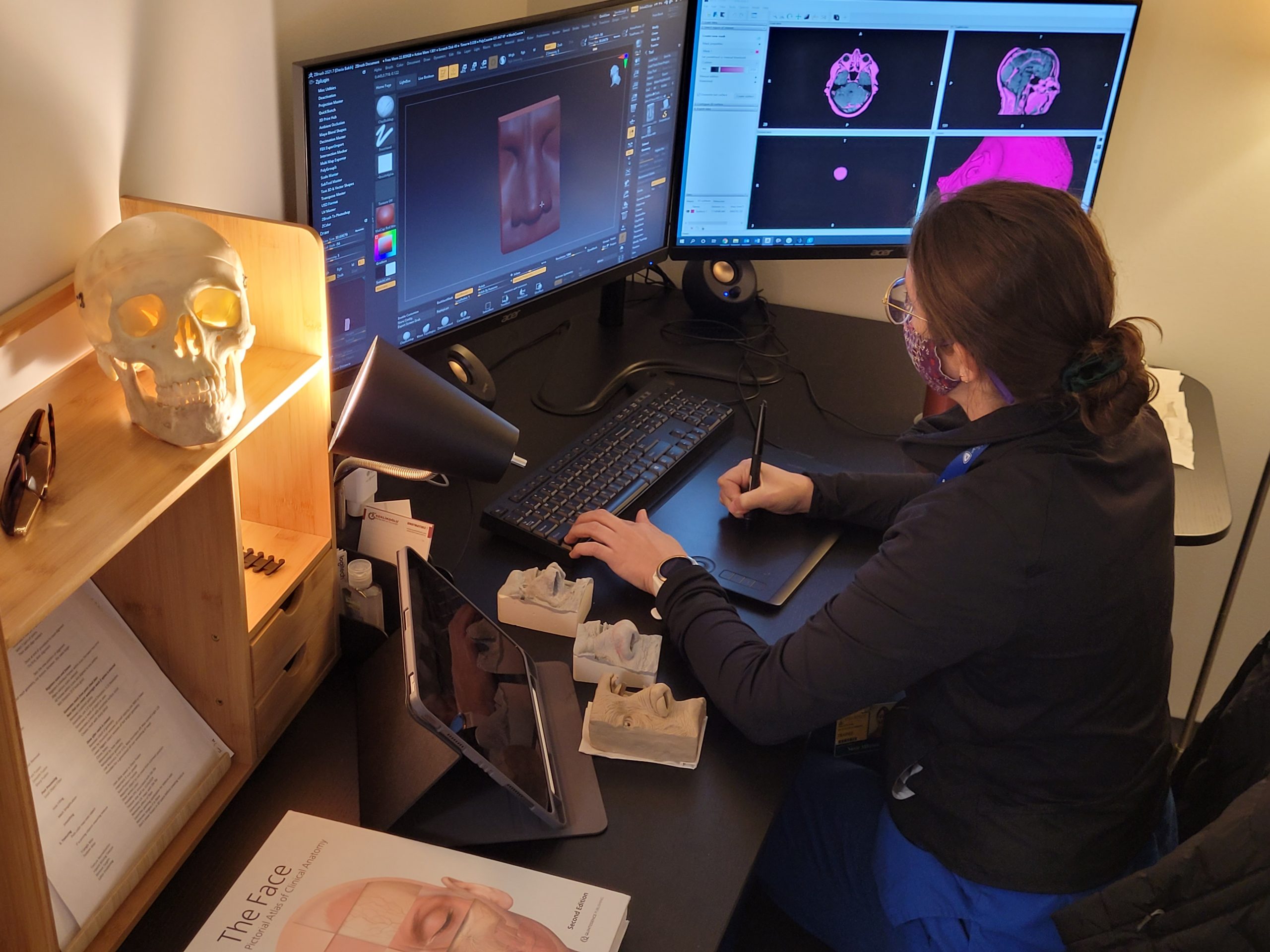
Admissions
We seek candidates who demonstrate high academic performance in science; excellent artistic, sculpting, and problem-solving skills; and strong verbal and written communication skills. Additionally, accepted students display empathy, compassion, and patience required to serve patients needing custom prosthetics.
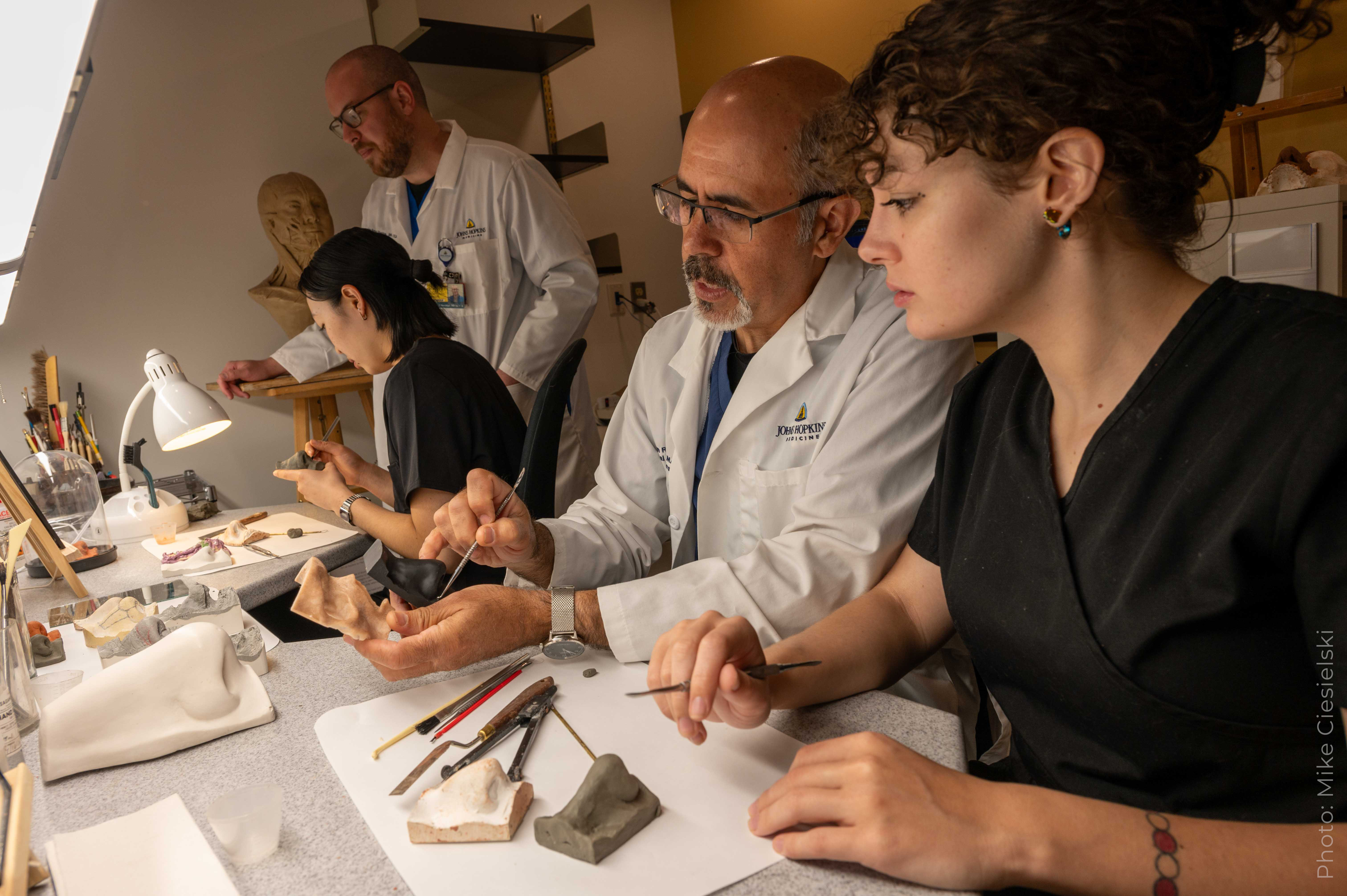
Curriculum
2 Year Program
The Clinical Anaplastology Program (CA) program offers a robust curriculum designed to prepare future leaders in the anaplastology profession. Accredited since 2023, the CA is the first of its kind and offers courses in medical sculpture as well as graduate level science courses in the School of Medicine.
Frequently asked questions
General Questions
When was the CA program founded?
In the spring of 2022, the Maryland Higher Education Commission (MHEC) reviewed the proposal and recommended implementation of the Johns Hopkins University Master of Science in Clinical Anaplastology program.
What areas of Clinical Anaplastology are covered in the MS Program?
The full program is intended to prepare applicants for professional paid internships in Clinical Anaplastology as they move forward to obtain certification from the BCCA.
Sample educational content covered during the MS program:
- Facial Prosthetics: Auricular (ear), Orbital (eyelid), Nasal (nose), Upper Facial, Hemifacial, and Midfacial prostheses
- Ocular Prosthetics: artificial eyes, scleral shell, in-prosthesis, conformer therapy and indwelling ocular devices (inside the eyelids)
- Somatic Prosthetics: Hand, finger, foot, toe, breast, and cosmetic covers
- Patient / Clinician Considerations, Retention Mechanisms
- Human Anatomy, Pathology of Facial Cancers
- Medical Sculpture (includes instruction in 3D scanning, 3D digital sculpting, 3D printing)
- HIPAA, CPR, Infection Prevention and Control
- Materials and Methods, Sculpting Exercises, Casting and Finishing
- Professional Publication and Presentation
- Business Practices and Ethical Standards
- Supervised Clinical Rotations
- Capstone Research Project
For more information, take a look at the Curriculum page.
Do you accept international students?
Yes. Admittance is open to domestic and international students.
All applicants will need to show evidence of English language ability either by completing a college course in English Composition (writing) or by exam (GRE, TOEFL, IELTS, or similar).
Is it possible to attend and complete your program remotely?
No. The program includes on-site instruction and clinical experiences. Essential tasks, like taking molds of a patient’s individual post-surgical site, is not possible via remote learning.
Can MS Clinical Anaplastology graduates independently work with patients after the program?
After completing the 22-month clinical anaplastology MS program, entry-level anaplastologists are strongly encouraged to seek paid positions in existing practices with a Certified Clinical Anaplastologist (CCA) and to pursue certification from the Board for Certification in Clinical Anaplastology (BCCA).
Where do your graduates go after the MS program?
The program is designed to strongly position entry-level anaplastologists to meet BCCA Certification. Students completing the 22-month clinical anaplastology program follow BCCA Eligibility Pathway 1 requirements.
BCCA Eligibility Pathway 1 typically requires an additional time of supervised clinical practice, a Clinical Case Portfolio (consisting of 18 different cases), as well as a passing score on the certification exam in order to attain full certification and ability to practice independently. More details are available on the BCCA website – https://www.bcca-cca.com/eligibility.
Can I visit the Clinic?
To reduce clinic density and the potential risk of infection for vulnerable patients, visits from potential applicants are prohibited.
How long do graduates intern before seeking BCCA certification?
Most graduates will participate in a paid internship with a Certified Clinical Anaplastologist (CCA) to gain further clinical exposure, learn different techniques and continue building their Clinical Case Portfolio to become eligible for Certification.
Does the MS program satisfy the Clinical Case Portfolio required for BCCA Certification?
Information on BCCA Certification Requirements for a Clinical Case Portfolio (and additional requirements) can be found here. Currently, submission of a Portfolio containing 18 cases is required by the BCCA (including 3 Detailed case reports, as well as 15 remaining cases) for certification eligibility purposes.
It is the student’s responsibility to properly document all such clinical cases during and after the program. While the 22 month Master of Science program may provide a large number of these cases, it is not guaranteed to provide all the required cases. In such instances, a post-graduate internship is advised.
The CA Profession
What is Anaplastology?
The Board for Certification in Clinical Anaplstology (BCCA) defines Anaplastology as a branch of medicine dealing with the prosthetic rehabilitation of an absent, disfigured or malformed anatomically critical location of the face or body.
(from Greek derivation: ana-again, anew, upon; plastos-something made, formed, molded; logy-the study of)
Clinical Anaplastology is the art and science of providing custom-made facial, ocular, and non-weight bearing somatic (body) life-like prostheses.
How is Clinical Anaplastology different from Medical Illustration? How is it similar?
The goal of Clinical Anaplastology is to restore symmetry and normal appearance to malformed, disfigured, or absent parts of the human body. In contrast the goal of Medical Illustration is to create a visual that teaches concepts in science and medicine to a particular audience.
Practitioners of each discipline have a strong background in biological sciences; a desire to communicate and work with others; and an ability to accurately, realistically, and artistically represent what is directly observed.
Anaplastologists are clinicians, and Medical Illustrators are visual communicators.
What is the International Anaplastology Association (IAA)?
The International Anaplastology Association (IAA) is the professional membership organization for anaplastologists. IAA is the recognized global forum for excellence in continuing education, research, and innovation in anaplastology. The IAA meets on an annual basis across the globe to provide opportunities to exchange ideas that push the profession and its members forward in service of the patients clinical anaplastologists care for.
What is the Board for Certification in Clinical Anaplastology (BCCA)?
The BCCA promotes and provides certification in Clinical Anaplastology for the enhancement of patient care and professional practice.
Certification provides evidence to patients, clinicians, hospitals, employers, and health insurance programs that practitioners have met peer reviewed standards for safe and effective care of patients through examination, clinical portfolio and other certification program requirements.
Where do Clinical Anaplastologists work?
Clinical Anaplastologists are considered allied healthcare professionals practicing in various clinical settings. Work settings are typically associated with larger medical institutions (with comprehensive cancer center designation). Employment within healthcare centers is usually associated within dental (maxillofacial prosthodontics), plastic surgery, otolaryngology (head and neck surgery), or rehabilitative medicine departments. Alternatively, many practitioners have private practice clinics
What's to do about "Body Parts" TV Show on TLC?
TLC launches a new TV program Body Parts in April 2022 featuring certified clinical anaplastologist Allison Vest, a friend and colleague of the Anaplastology Clinic at Johns Hopkins. We look forward to watching Allison Vest and her team share what is possible with clinical anaplastology through this program.
Portfolio
What are the Portfolio requirements?
Applicants may submit either an Artistic Portfolio, a Clinical Portfolio, or a Combination Portfolio.
- Artistic Portfolio: 15-20 examples from all 5 art categories:
- Figure or Portrait Drawing – 5 minimum
- Figure or Portrait Sculpting – 3 minimum
- Color Media – 3 minimum
- General Drawing – 2 minimum
- Digital Media – 2 minimum (drawing, illustration, or painting)
Source of Artistic examples: (L) Life or Direct Observation, (P) Photo Reference, (B) both Live and Photo Reference.
Additional examples may include: prints, 3D digital modeling, or multimedia presentations
- Clinical Portfolio: 10 photographic examples of clinical work – dental appliances, maxillofacial prosthetics and the like (Authorization for Release of Health Information Form – collect, do NOT submit!)
- Before / after photos on patient – one patient per example; multiple views encouraged
- Photos of a prosthetic device alone without the patient – multiple views per example encouraged
Source of Clinical examples: (S) Sole Creator; (C) Collaborative Piece (identify your effort)
- Combination Portfolio: combines elements of both Artistic and Clinical portfolios
Additional information may be found on the CA Sample Portfolio Page
What type of art is best for an artistic portfolio?
Admissions faculty encourage submitting accurate and realistic representations of closely and directly observed subject matter. Avoid work created exclusively or predominately from photo reference.
Take a lok at the Sample Portfolio Page for more information
What type of art should not be included in the artistic portfolio? Why?
Admissions faculty discourage art created exclusively from photo reference, non-representational, or abstract art. These do not show the ability to draw or sculpt what you see, a critical ability for the professional Clinical Anaplastologist.
Admissions
What are the prerequisites to the program?
- A Bachelor’s degree from an accredited college or university (BS, BFA, BSN, BA, etc.)
- Science coursework in each of the following taken “for credit” and at a level for Science Majors:
- Inorganic and or General Chemistry (with lab)
- Vertebrate Anatomy (with dissection lab)
- Vertebrate Physiology
- Organ Histology
- Portfolio: Applicants can submit either the Artistic, Clinical or a Combination Portfolio for admission:
- Artistic Portfolio – 15-20 examples of all 5 required art categories:
- General Drawing
- Figure or Portrait Drawing (5 minimum)
- Figure or Portrait Sculpting (3 minimum
- Color Media (3 minimum)
- Digital Media (2 minimum – drawing or painting)
- Source of portfolio examples: (L) Life or Direct Observation, (P) Photo Reference, (B) both Life and Photo Reference
- Additional examples may include: 3D prints, 3D digital modeling, multimedia presentations
- Clinical Portfolio – 10 photographic examples of clinical work (dental appliances, maxillofacial prosthetics, and similar); Patient Information Release forms are required for each case!
- Before / after photos on patient – one patient per slide; multiple views per example encouraged
- Photos of a prosthetic device alone without the patient – multiple view per example encouraged
- Source of Clinical examples: (S)-Sole Creator, (C)-Collaborative Piece
- Artistic Portfolio – 15-20 examples of all 5 required art categories:
- English Composition – one course or by exam (GRE, TOEFL, IELTS…)
- Preferred Skills or previous exposure:
- CPR Certification
- Dental Laboratory Materials / techniques
- Other anaplastology-related knowledge and skills (prosthetic sculpting, moldmaking, impression taking, and casting). Although previous exposure to these are preferred, they are covered as part of the full training program
- 3D printing, modeling, CAD, 3D scanning and related 3D digital work
Where do I submit Standardized Test Scores?
Only applicants invited to interview and submit the formal SOM application should submit standardized test scores. The Department will not have access to test scores prior to this process. Please do not submit applications prior to an invitation to do so from the program.
5316 – Johns Hopkins University PhD Medicine Institution Code
What is the best / most successful undergraduate major to prepare for the program or profession?
While either a science (biology, chemistry, pre-med, pre-dental) or fine art (sculpture, illustration, design) degree is recommended, a combination of both science undergraduate coursework and art training is required.
What is the application process?
Candidates send an email to [email protected] to request a FERPA and HIPAA security compliant OneDrive folder for uploading their portfolio (Artistic, Clinical or Combination) along with a PDF Applicant Profile.
Portfolios are due January 25th each year.
After review, the Program Director invites select candidates for Interviews and to submit the formal School of Medicine Application (due dates for these materials will be provided).
Offers of enrollment will be made to the group of interviewing applicants.
All applicants submitting portfolios will receive confirmation of their final status by April 15th of the admissions year.
When are the Admissions materials Due?
For the MS in Clinical Anaplastology program, submit the Applicant Profile and Portfolio by January 25th each year.
Where do I submit my Portfolio?
Request a personalized Hopkins Medicine <strong>OneDrive folder</strong> (both HIPAA and FERPA security compliant) by emailing a request to [email protected].
The Portfolio (Artistic, Clinical or Combination), 2-page Applicant Profile, CV or Resume, are then uploaded to the personalized folder.
Please do NOT email your portfolio as emails are not HIPAA compliant!
How should I submit my Portfolio?
Along with the 2-page Applicant Profile, Portfolios should be submitted as a PDF file. If using PowerPoint to create your portfolio presentation, please export or print to PDF. Images of your work should be at a high resolution so that details are visible. Blurry images will not be helpful to the admissions faculty.
To Submit a Portfolio, request a Hopkins OneDrive link by emailing [email protected]. Upload your Applicant Profile, Portfolio, and any additional supporting items (Resume/CV, Grade Reports, Professional Certifications, etc.). Hopkins OneDrive is both FERPA and HIPAA security compliant. Once all artwork is uploaded, notify [email protected].
Please do NOT email your portfolio as emails are not HIPAA compliant.
What other courses do you recommend as helpful for this profession?
Recommended additional courses: Cell or Molecular Biology, Art History, Photography, Digital Media (Drawing, Illustration, Painting, 3D Modeling, 3D Animation, Multimedia Presentation).
Do I really have to take the sciences?
Yes. Successful clinical decision-making and technical execution of treatment plans demands professionals equally rooted in science as well as art. Therefore, the Science prerequisites are required for successful progress in the program and also for future Certification in the profession.
Students take the rigorous fast-paced Human Anatomy with Developmental Embryology course along with Johns Hopkins Medical and Graduate students. Prior advanced undergraduate science coursework is essential preparation to excel in the graduate-level sciences taken during our program.
How many applicants submit portfolios each year? How many do you accept?
We anticipate receiving 10 portfolios each year and accepting 2 students into the proposed MS program.
Request More Information
To receive more information about the Johns Hopkins Master of Science in Clinical Anaplastology (CA) Graduate Program, please fill out our Information Request Form. You may also call 410-955-3213 or send an email to [email protected] for more information.
Ready to Apply?
Let’s get started! Admission to our program is a two-step process. Please feel free to get in touch and let us know how we can help you on your journey!

